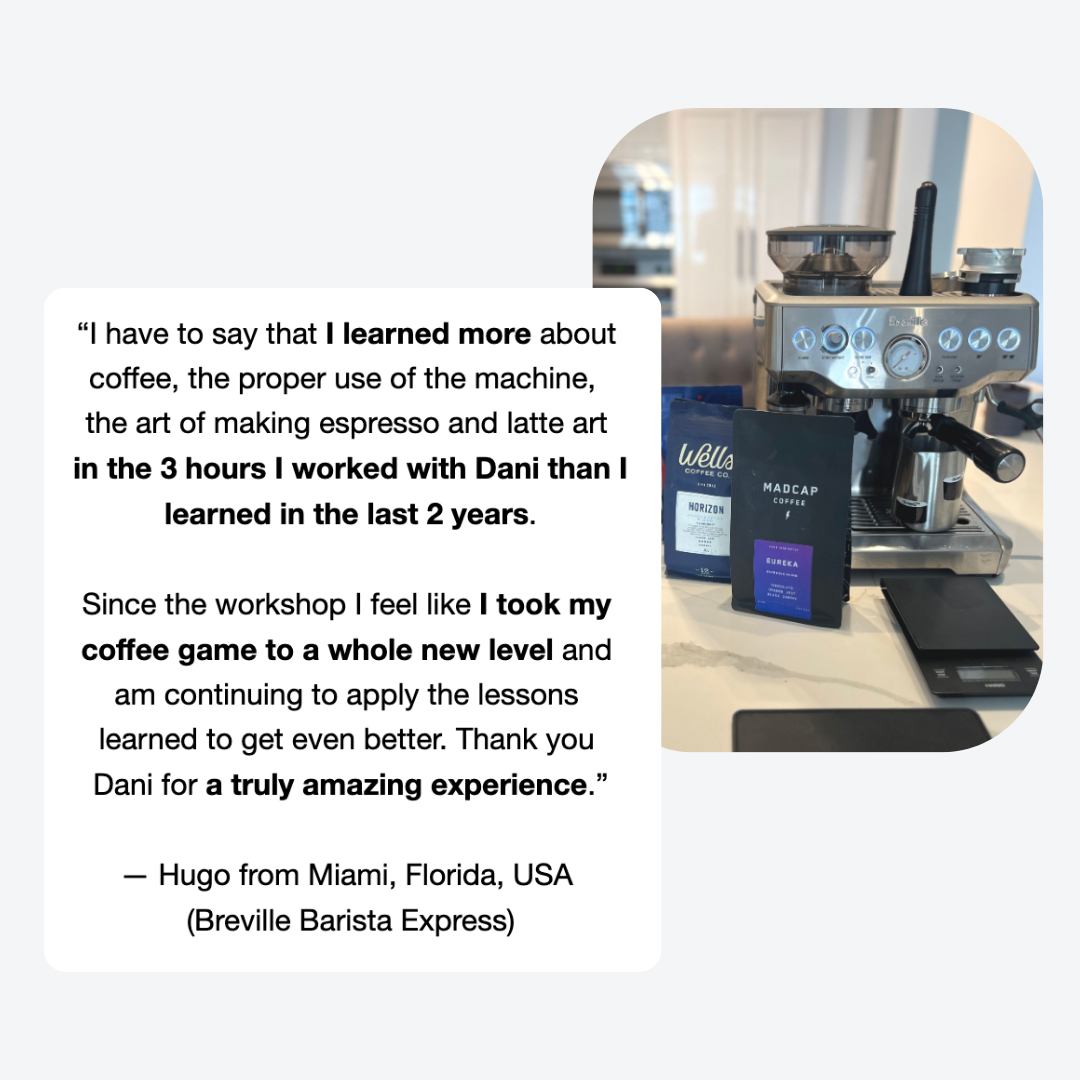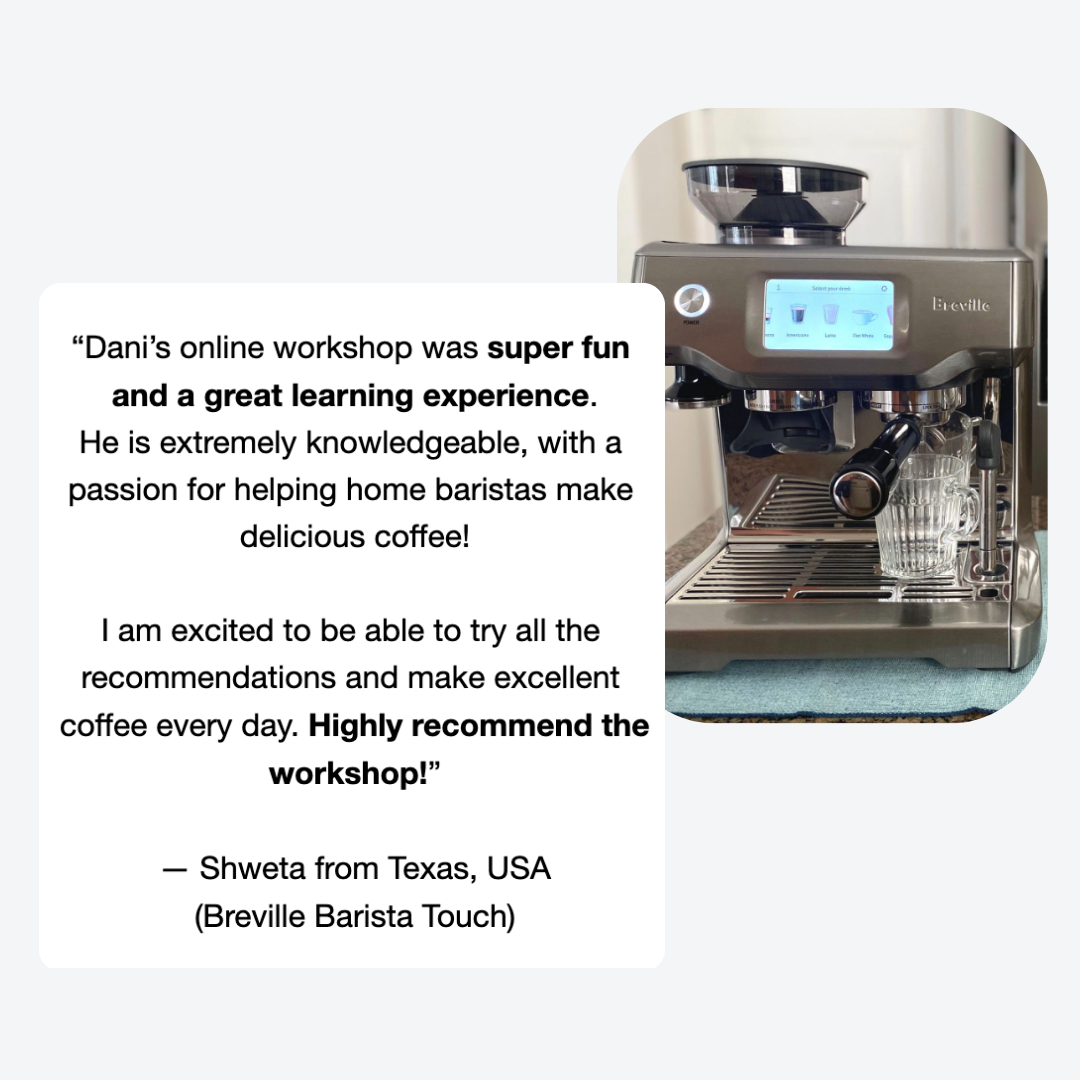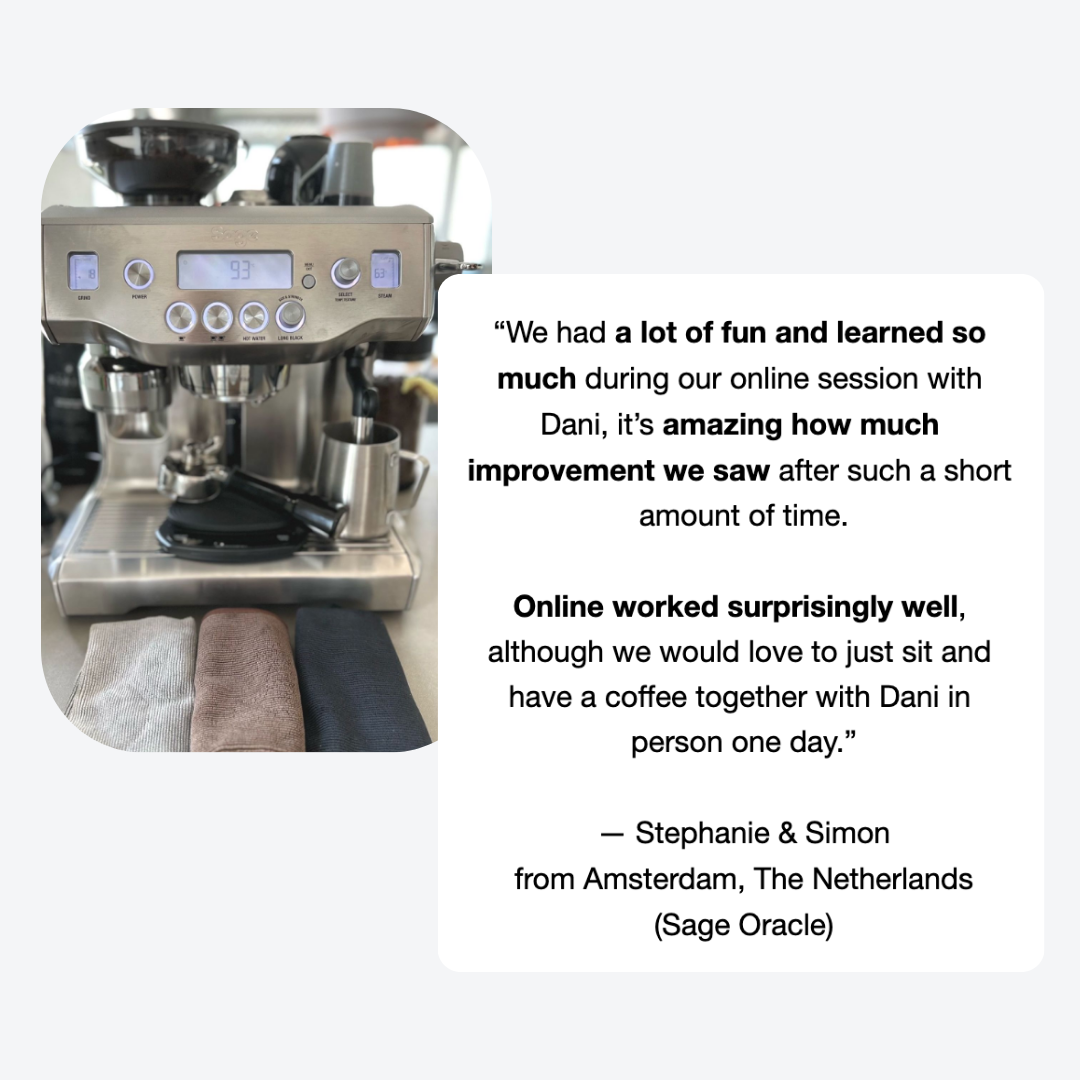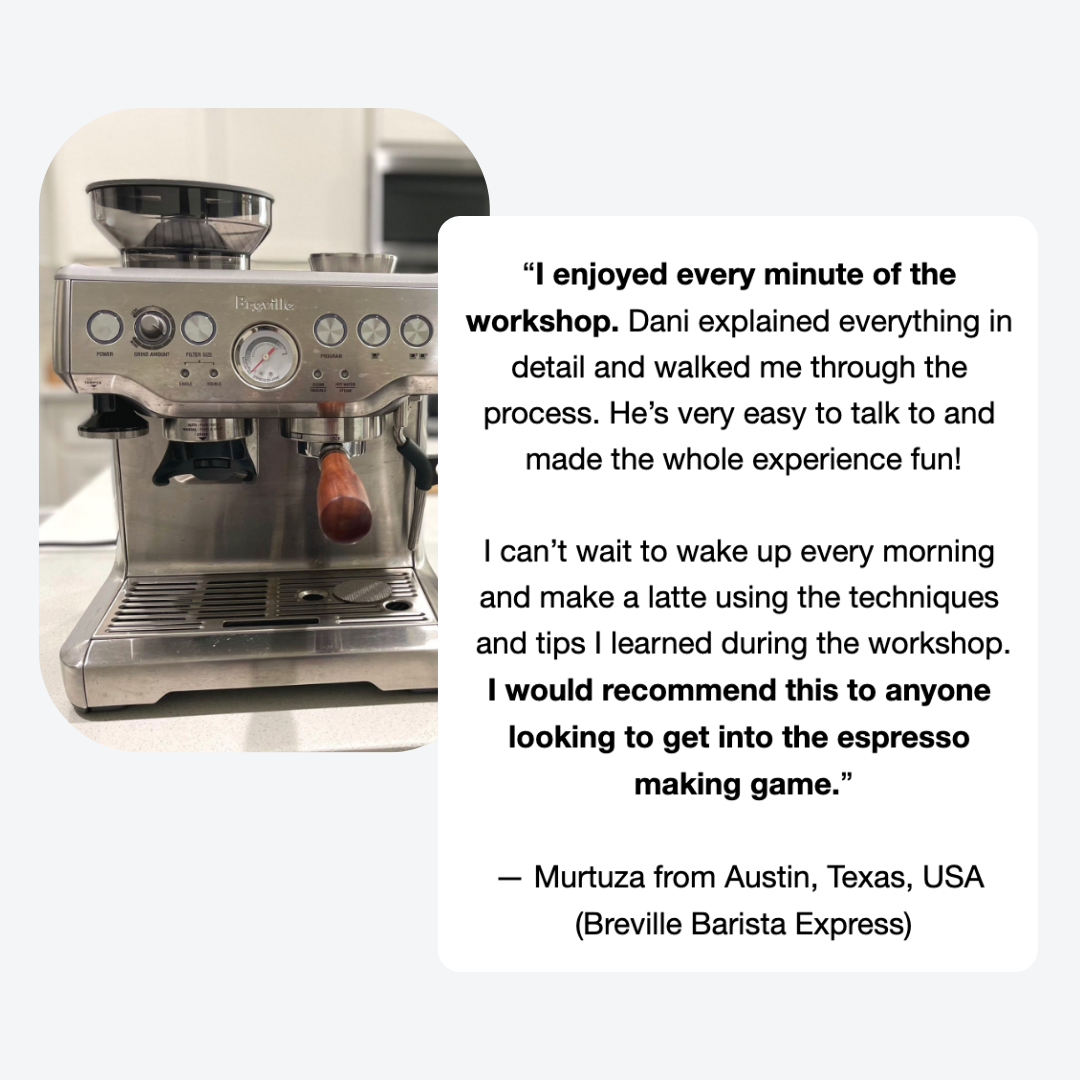Sour espresso at home?
3 easy tips to fix it
Imagine you just got a bag of freshly roasted coffee beans and you’re excited to enjoy a tasty espresso! You’re starting to dial it in using your standard espresso machine settings and recipe – for example, 93°C water temperature (200°F) and a brew ratio of 1:2. But, when you taste it, your espresso is overly sour. What now you say?
Here’s a new game plan for you! There’s a big chance you got a lighter roast on your hands. In simple terms, this means the coffee beans have been roasted to showcase fruitiness and a richer acidity. Therefore, you need to make a few tweaks and adjust your standard approach, in order to bring out more sweetness and pull a more balanced tasting shot of espresso.
Tip 1: Adjust the grind size to finer
Let’s take a step back and consider roasting for a moment. To keep things simple – on one side of the spectrum we have light roasts (coffees which have been roasted for a shorter time) and at the other end we have dark roasts (coffees which have undergone longer roasting times). During the roasting process, the coffee beans become:
less dense and more brittle (i.e. they break easier)
more soluble in contact with hot water
Therefore, the longer a coffee is roasted, the easier it will be to grind and extract flavour from. That being said, since they have a reduced brittleness and solubility, light roasts require a finer grind size. In this way, more aromatic compounds are being extracted and the espresso tastes more balanced and enjoyable.
Side note: since grind size and extraction times go hand in hand (finer coffee will slow down the water flow), you’ll also notice longer shot times.
Tip 2: Increase the brew temperature
It’s important to understand that roasted coffee contains a number of compounds which contribute to different flavour profiles. For example, if you were to split an espresso extraction in 3 different consecutive stages, you’d extract:
in stage 1 – fruity and acidic compounds
in stage 2 – sugars
in stage 3 – plant fibers and phenolic compounds (these bring out bitterness)
Since light roasts are less soluble, one way in which you can extract more out of them is by using a higher brew temperature. Otherwise, with the temperature of the water too low, the espresso may taste unpleasant (e.g. high in sourness/acidity, lacking sweetness, salty, empty finish/aftertaste). That’s because not all compounds were properly dissolved into the espresso, to make it balanced and enjoyable to drink.
So, if my standard espresso machine setting is 93°C/200°F, for a light roast I will usually bump the temperature up to 95°C/203°F. How you get to this temperature will depend on the espresso machine you have at home. Regardless of the type of machine you own though, taking the time to tweak the temperature of the extraction according to the roast level of the coffee beans you’re using – in our case a light roast – will help you achieve a better tasting espresso.
Tip 3: Try a higher brew ratio (extract more espresso in the cup)
While the 1:2 brew ratio works well most of the time, lighter roasts can be unpleasant to drink at higher strengths. This is why for a lighter roast, with more floral and fruity qualities, I find pulling a few additional grams makes for a more enjoyable espresso. It’s less concentrated, the acidity gets balanced out and the coffee opens up more. Here’s a very simple and practical example:
for a standard medium roast – 18 grams in and 36 grams out will taste pretty good most of the time
for a lighter roast though – using the same dose, you may need to stretch the yield to 45 or even 50 grams of espresso out, to improve the taste of your espresso
I suggest to start by keeping the 1:2 brew ratio fixed, while you adjust the grinder to your taste. Remember: the finer you grind, the longer the espresso extraction will take. And, if you’re still not happy with the results, then you can go ahead and tweak the brew ratio.
One final and important note: In case you have an entry-level home espresso machine with a built-in grinder (e.g. Breville or Sage, De Longhi, Solis, Gastroback), I recommend that you look for medium or medium-dark roasted coffee beans, since those types of roasts will help you achieve the most consistent results.
I hope you find these tips helpful and, if you’d like to dive deeper, you may consider our espresso and latte art home barista workshops. Happy brewing!












